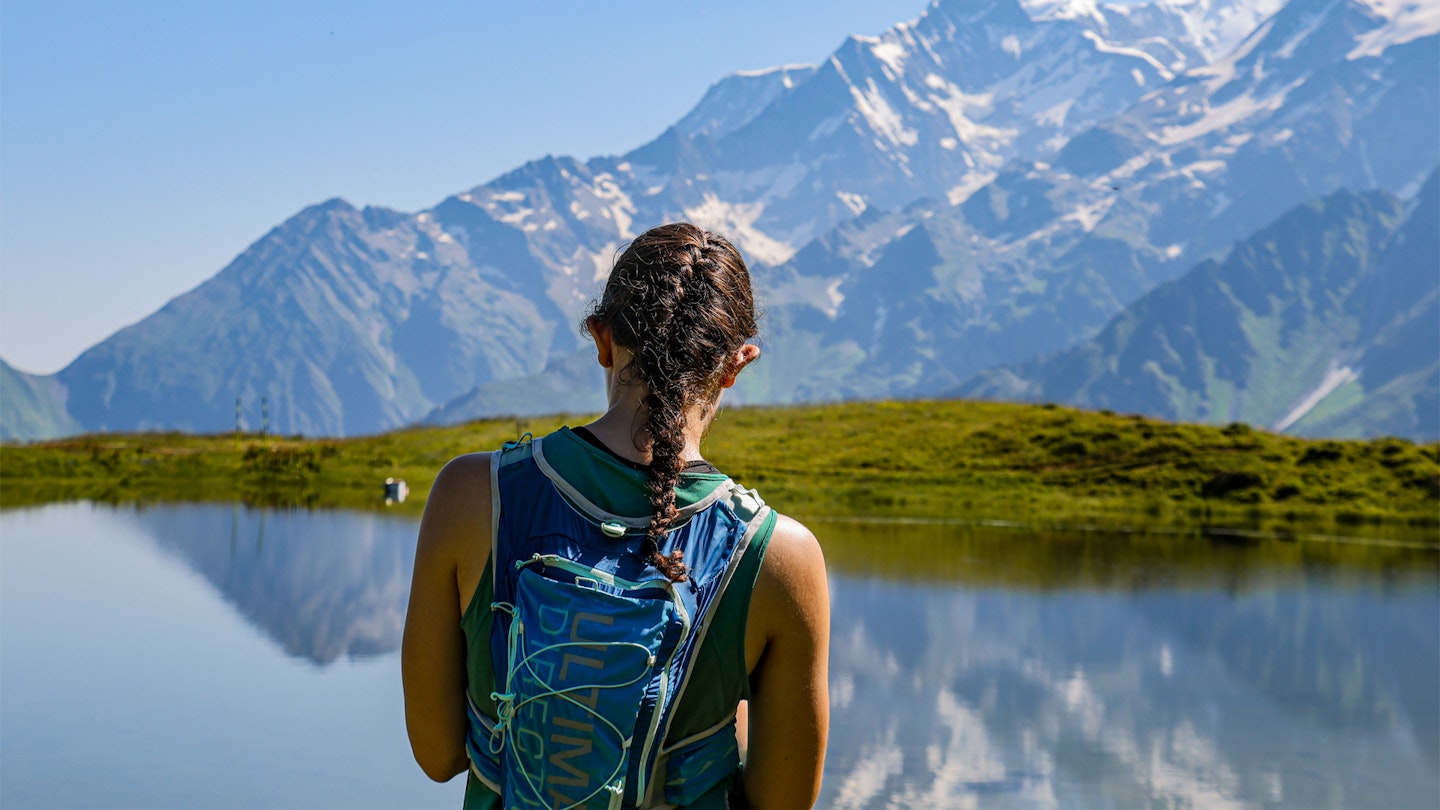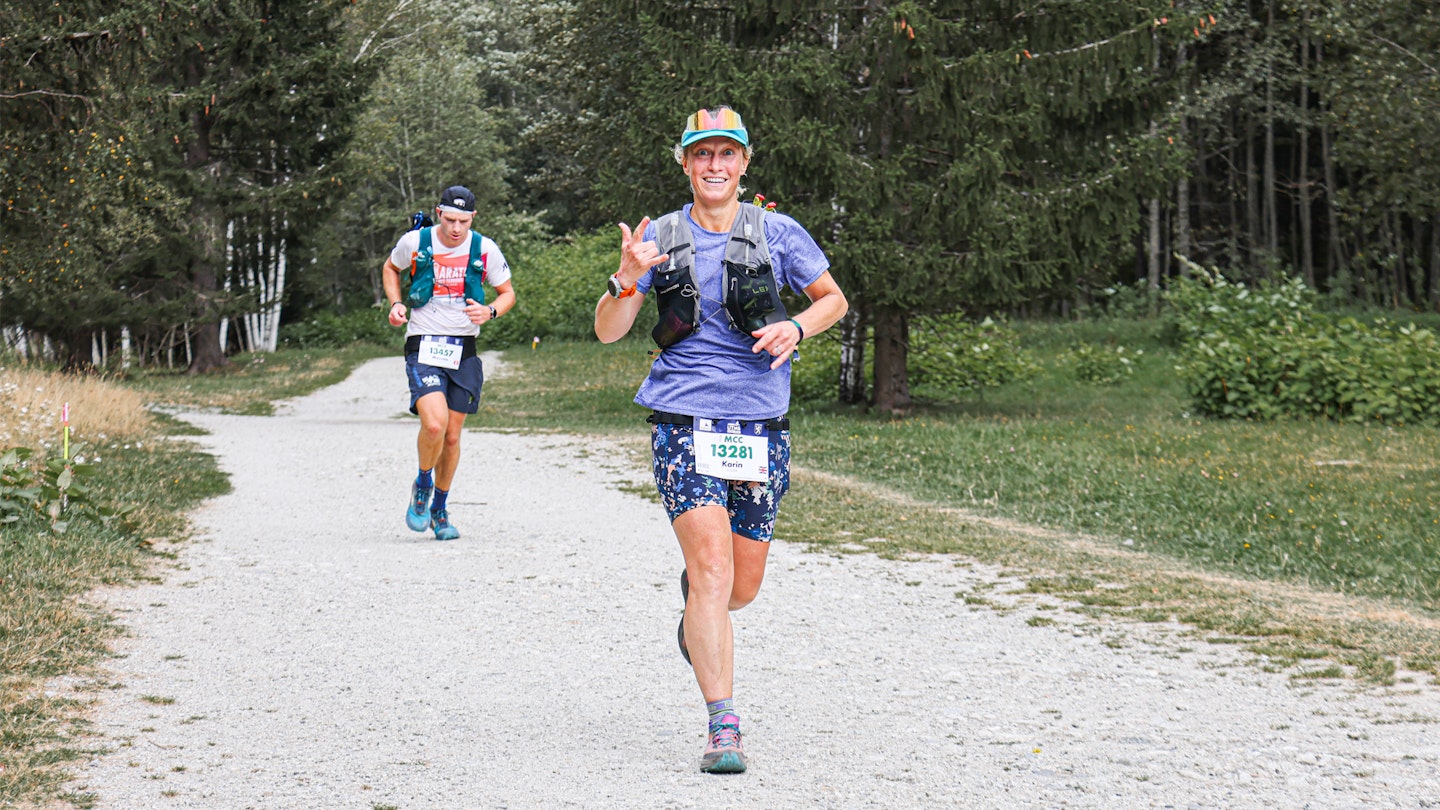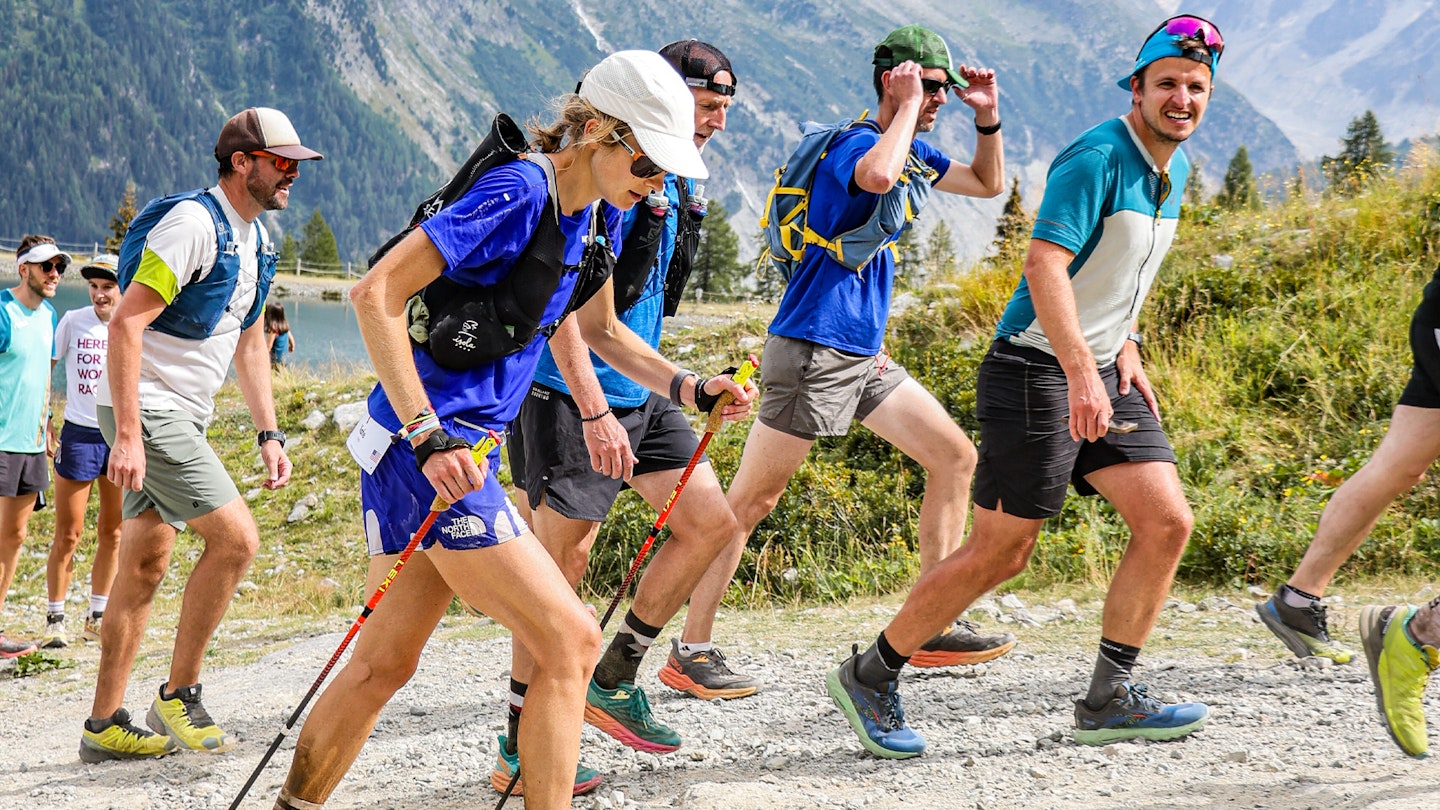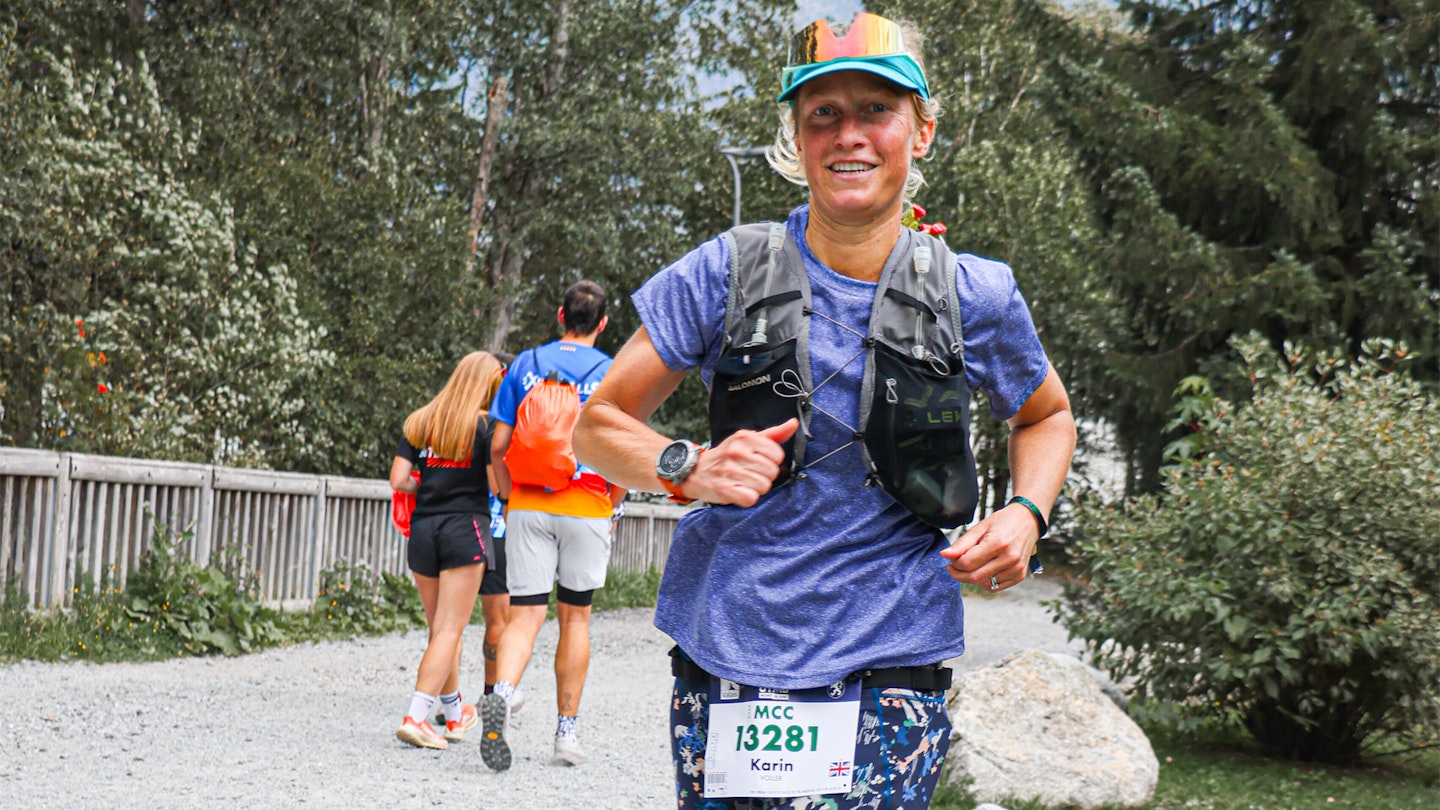Karin Voller, Head Guide & Coach at Run the Wild, has spent years helping runners of all levels explore the outdoors. Drawing from her experience coaching a predominantly female community and racing iconic events like the CCC in Chamonix, Karin reflects on why more women aren’t entering races, the barriers they face, and what event organisers can do to create a more inclusive trail running scene.

"Trail running has exploded in recent years. A 2022 study of nearly 10k runners by ITRA found the vast majority of trail runners first experienced running via a road running background (63%), and aside from wanting to get physically in shape, the benefits of discovering new places, and spending time in nature were the next biggest draws to the sport.
At Run the Wild we see a majority female participation, but the opposite is still true in the world of races. Last year I was racing the CCC in Chamonix and noted how the top finishing 100 in the field appeared to have a higher concentration of females than on the start line, so was this a one off? A new trend or something else? What is happening in one of the biggest trending sports for females? This is what I found, alongside some recommendations on how to encourage an equal participation in trail running events.
The starting point

In the UK, trail running used to conjure images of men hurtling down steep hillsides in fell races wearing tiny shorts, and having next to no regard for their safety, but the landscape has changed hugely. Thankfully! With that change, has come an increase in female participation, and more recently, a push to see female participation in racing to become more equal to male.
There are now even female only races in the UK and just one or two in the US which actively promote equal female representation by opening 50% of the places to men, and 50% to women. However, in most larger races, the emphasis is on trying to encourage women to sign up, rather than offering places specifically to women. Could this be the best starting point?
Should it be about racing?

Until very recently, I was the only one of my all-female friend group, that ever trail ran, or raced, but that wasn’t because they didn’t feel they could, but rather that they didn’t particularly want to. I feel that in the pursuit of equality, we have to be careful to not morph this idea into suggesting women are wrong for not wanting to be like men. That is not equality.
At Run the Wild we have approximately 70% female participation. We offer a completely non-competitive environment to get out trail running and enjoy the countryside. Perhaps looking at statistics from racing, doesn’t really give a full picture.

SheRaces, an organisation set up to promote and encourage women to be on the start line, say that racing is important to help us push boundaries and gives a sense of achievement. Without doubt for some it does, but that’s not the sole or even primary purpose of running for many. Personally, I would say my biggest running achievements have been away from racing.
Some may suggest that women aren’t drawn to racing because they are not shown enough imagery of other women racing at the front, middle and back of the pack, and I think this points to a wider issue in society. Nowadays we have such visual displays via social media that many people can look at images and feel under represented, whether that’s gender, age, race, body type, and probably many more. Maybe AI will be so clever that one day we will visually always see a likeness of ourselves in marketing material, but still I’m not sure whether ‘equality’ will be reached.
What can event organisers do?

Can races and events do more? Absolutely! Toilet facilities, safe space changing facilities, beneficial deferral policies, equal prize money and coverage, and even correctly fitting t-shirts are all under the SheRaces suggestions made to race organisers that want some help in becoming more female friendly. At Run the Wild with a 70% female guiding team, this comes naturally to us too. However, this is far from the norm in the running events world.
The data and the differences

The data from some of the major ultra trails suggests that as the distance increases, whilst the percentage of women in the field reduces, the equivalent percentage in the top 100 is overrepresented. I would add though that the numbers are still small enough that data can be very skewed by limited number of entries, which ties in with what I observed at the CCC in 2023.
There is increasing suggestion that the longer the race the more even the playing field between men and women become. This is because of a few reasons. Shorter races have a great reliance on physical strength, larger muscles, larger heart, larger lungs, which men have a physiological advantage over women for. The longer the race, the more other factors play a role both before and during the run.

There is typically a difference in the psychology between men and women. Men take the wing it and hope approach, and women are much more likely to underplay their abilities and achievements. We see this numerous times over at Run the Wild, where our runs are grouped into ‘similar ability’ based on a road 10km time. Men will frequently cite their PB time that they achieved 10 years, 2 kids and 1 beer gut ago, whereas women take the time they ran the previous week, but add 10 mins for feeling not quite right, for not wanting to hold up the group, for worrying about the impact of weather.
Secondly when the groupings get sent to client, the women will ask to move down a pace group, while the men are happy to see what happens. When the run starts, if it needs to happen, it’s most commonly a guy who we need to ask to drop back a group as they aren’t keeping up, even if that’s evident to others, there can be some denial that they aren’t able to maintain the pace. Studies have indicated that on a relative scale women are far better at pacing over a marathon distance, in part due to make over confidence in predicting finish times leading to poor race pace strategy and execution. (Hubble and Zhao, 2016)
Guilt

The second aspect is guilt. I even find this at home. Even though my husband is absolutely supportive and encouraging of all my running, I feel guilty if I am out for any length of time, away from the dogs (insert kids here for many women of my demographic), and away from the running of the household. Whilst my husband feels other equal time pressure, typically work, it is not quite the same.
I should again reiterate this isn’t a pressure that has been put on me by either my husband, or society necessarily, but exists in my own head. Looping back in to my first point, where women don’t feel they are able to get the training in, they are less likely to then try and ‘wing it’, whereas men will give it a go anyway. I do sometimes wonder though whether the emotion I call ‘guilt’ can also be a little bit convenient as an excuse?
The strength of women

What we may lack in pace, we make up for in sheer grit and resilience. I won’t mention childbirth here, as in honesty it’s not something I’ve been through so will not claim I know the pain, but I do know how members of our house react differently whenever the ‘man flu’ is doing the rounds. The ability to function while uncomfortable isn’t a solely female trait, but may be more prevalent.
Athletes like Courtney Dauwalter, who have blasted through the male field in recent years interestingly talk frequently about the embracing of pain as something to actively seek out or digging in the pain cave as she refers to it.
Learning from each other

Both sexes have something to learn from each other. Men, learn to be more realistic and humbler and prepare better. Women, learn to give things a go, really what’s the worst that can happen? The fear of failure should not prevent you from taking that leap of faith. Through opening discussions how different genders can learn from each other as well as how events can be shaped to be more inclusive to all, we can start seeing more equal participation. It’s also important to note that this doesn’t have to be in a race setting, which let’s face it has origins from male competitions, be it from ancient Greece or earlier times. Non-competitive participation is just as valid and should be as celebrated on a par with races.
Essentials for event organisers

Similarly, by shifting the focus on events to have equal participation through 50/50 gender split of spaces available should support true gender representation. At the very minimum events must have facilitates that meet the basic needs of both genders, not just those of men, which is currently how it stands, from local races to the major leagues.
The future

However, the future does look bright as event directors open their minds to change for good, and both male participants recognise the need to support female runners, and likewise, female runners begin to take control and take their rightful stand on the start line. Let’s make sure we are all here for the women’s race."
– Karin Voller, Head Guide & Coach, Run the Wild
